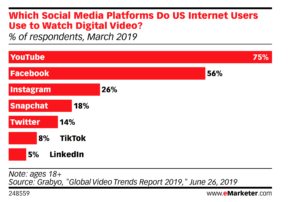Last week, we attended a Digital Marketing Masterclass event and met with 30 advertising agency executives to talk through challenges and strategies going into 2020. We’ve spoken highly of Masterclassing’s event series before — it’s not your average tradeshow or conference event where you may get a thousand attendees walking by your booth, but only talk to a handful of people who are killing time before the next panel. Masterclassing’s events offer a lot more face-to-face connections, with industry experts leading short workshops and presentations before in-depth, roundtable discussions.
The Digital Marketing Masterclass in New York City proved to be another great event. The agencies represented ran the gamut from Big 6 holding companies to mid-sized, independent digital shops, and execs across the board were asking a lot of questions about YouTube and Connected TV.
These execs were excited to share that they saw increasing brand investment on YouTube, but also found it sometimes challenging to convince brands that the platform is more than a brand awareness engine. We shared talking points that help drive home the direct response results brands are getting from YouTube. One example came from a QSR client we worked with, where they saw a cost-per-visit of ~$0.27 through targeted advertising on YouTube, and another from an auto brand that drove a cost-per-visit well below their benchmark.
During the roundtable discussions, the biggest question was around how YouTube and Connected TV can complement each other. YouTube and Connected TV will together make up half of all video advertising dollars in the U.S. this year, so agency execs know that these platforms should represent the core of their video strategy, but they’re still figuring out how they’ll execute. Here are some of the major points we heard about how YouTube and CTV can be a good one-two punch in 2020:
YouTube Is Connected TV
YouTube is actually the biggest player in ad-supported Connected TV right now — in fact, our analysts were among the first to point that out. By targeting a YouTube campaign to TV Screens, marketers can test a true Connected TV strategy — and considering that it’s the largest audience in the space, it should be top-of-mind for marketers.
YouTube And Connected TV Are Video-First
Unlike social platforms like Facebook, Instagram, Twitter, Snapchat, etc., audiences are turning to YouTube and Connected TV specifically for video. On the social platforms, consumers are looking to chat or otherwise engage in social activity, but on YouTube and Connected TV, marketers can rest assured that the audience is ready to watch video.

High Reach and High Engagement
Connected TV ads are typically non-skippable, helping marketers ensure they’re driving reach and a high number of views. YouTube’s specialty is driving deeper engagement, so pairing YouTube and Connected TV offers the best of both worlds.
Similar Creative
The creative requirements for YouTube and Connected TV platforms are very similar, with longer-form, made-for-digital video working best — allowing viewers to lean in and engage with your brand’s message.
Search Data on YouTube and Amazon
As we’ve noted in the past, YouTube and Amazon Fire TV work particularly well together in marketing strategies, as both allow marketers to leverage search data. On YouTube, marketers can target audiences based on Google Search data, while on Amazon, marketers can target based on purchases or searches on Amazon.com.
Like Masterclassing’s past events, the Digital Marketing Masterclass was an engaging afternoon of knowledge-sharing and agency shop talk, and we’re excited for future events.
Want to learn more about how to drive a YouTube and Connected TV strategy in tandem? Let’s connect.
